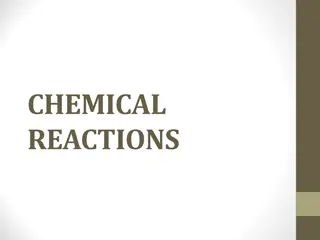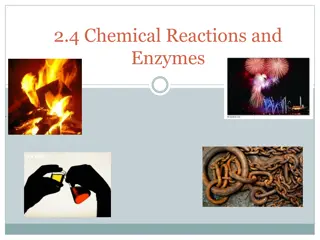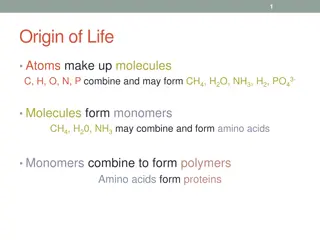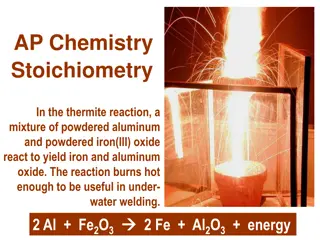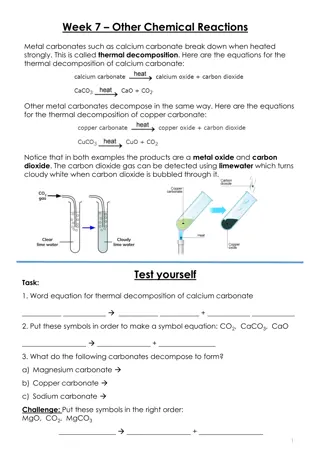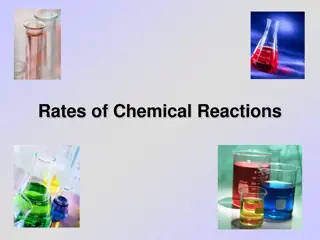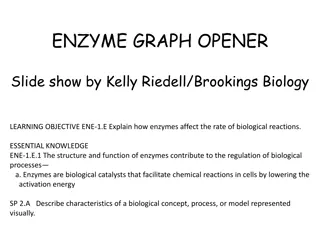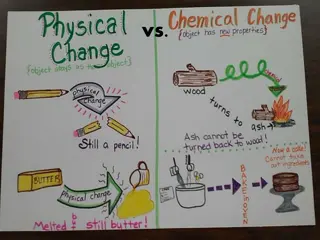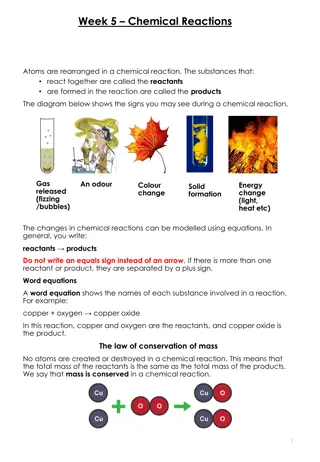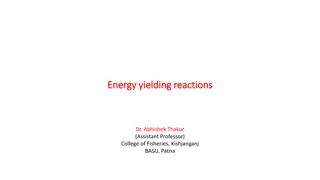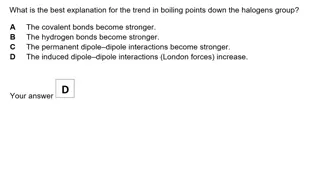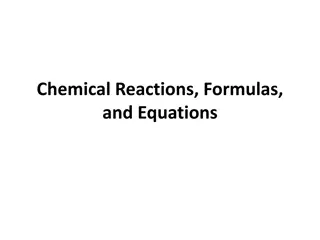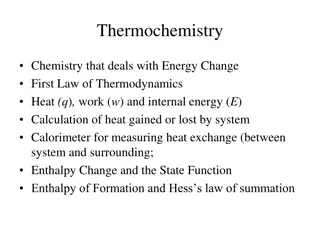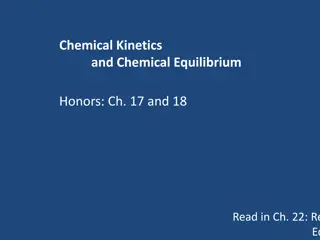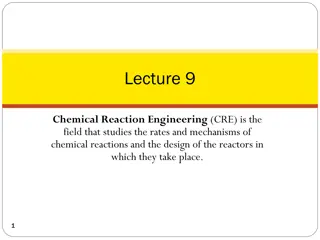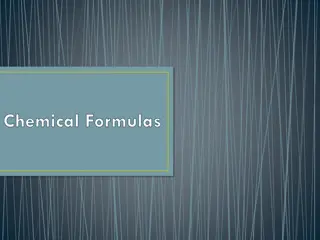Understanding Free Energy and Chemical Reactions
Exploring concepts like Gibbs free energy, standard free energy of formation, equilibrium, and Hess's Law in chemical reactions. The feasibility of reactions, equilibrium constants, and the impact of pressure on free energy are all discussed.
Download Presentation

Please find below an Image/Link to download the presentation.
The content on the website is provided AS IS for your information and personal use only. It may not be sold, licensed, or shared on other websites without obtaining consent from the author. Download presentation by click this link. If you encounter any issues during the download, it is possible that the publisher has removed the file from their server.
E N D
Presentation Transcript
Free Energy and Chemical Reactions Calculating Goas a State Function. Solving GoUsing Hess s Law. Using the following data (at 25o C) Cdiamond(s) + O2(g) CO2(g) Go= -397 kJ Cgraphite(s) + O2(g) CO2(g) Calculate Gofor the reaction Cdiamond(s) Cgraphite(s) Go= -394 kJ
Free Energy and Chemical Reactions Calculating Goas a State Function. Standard Free Energy of Formation ( Gfo). Go= np Gfo Methanol is a high-octane fuel used in high- performance racing engines. Calculate Gofor the reaction 2CH3OH(g) + 3O2(g) 2CO2(g) + 4H2O(g) products- nr Gfo reactants
Free Energy and Chemical Reactions A chemical engineer wants to determine the feasibility of making ethanol (C2H5OH) by reacting water with the ethylene (C2H4) according to the equation C2H4(g) + H2O(l) C2H5OH(l) Is the reaction spontaneous under standard conditions?
The Dependence of Free Energy on Pressure The equilibrium position represents the lowest free energy value available to a particular reaction. Free energy changes throughout the course of a reaction because it is pressure and concentration dependent. For any 1 mole of a gas at a given temperature S large V> S small Vor S low P> S high P
Free Energy and Equilibrium For standard conditions at equilibrium Go= -RT ln(K) This is on the equations sheet Gois the free energy at standard conditions, T is the Kelvin temperature, R is the ideal gas constant 8.31 J/mol K, and K is an equilibrium constant ( like we found in the previous unit Note- R gives you a value in J, not kJ
Equilibrium and Free Energy The reaction for the synthesis of ammonia is: N2+ 3 H2 2 NH3 Calculate the equilibrium constant for this reaction at 25oC. Hfo(kJ/mol) 0 0 -46 So (J/mol) 192 131 193 N2 H2 NH3
Free Energy and Equilibrium Equilibrium (LeCh telier s) is about reactions being spontaneous in one direction, then switching to the other direction in certain conditions (switching the sign of G). For standard conditions at equilibrium Go= -RT ln(K) For nonstandard conditions NOT at equilibrium, G = Go+ RT ln(Q) The difference between G , Gois the 2nd one is at standard conditions. The first is not.
The Dependence of Free Energy on Pressure One method for synthesizing methanol (CH3OH) involves reacting carbon monoxide and hydrogen gases: CO(g) + 2H2(g) CH3OH(l) Calculate G at 25oC for this reaction where carbon monoxide gas at 5.0 atm and hydrogen gas at 3.0 atm are converted to liquid methanol.
The Meaning of G for a Chemical Reaction A system achieves the lowest magnitude of free energy possible by going to equilibrium, not by going to completion. Spontaneous reactions do not go to completion, shift all the way over to products from reactants, but instead to equilibrium At equilibrium G= O
Free Energy and Equilibrium The equilibrium point occurs at the lowest value of free energy available to the reaction. Recall the following: If K > Q , then the reaction as written proceeds to the right. If K < Q, then the reaction as written proceeds to the left. If K = Q, then the reaction as written is at equilibrium, and there is no net reaction in either direction.
Relating Go= - RT ln(K) G = Go+ RT ln(Q) I could combine the two equations and get G = RT ln(Q) - RT ln(K) Note if K > Q then G is negative. The reaction is spontaneous and shifts to the right. if K < Q then G is positive. The reaction is spontaneous in the opposite direction or shifts to the left.
Another derivation of the same equation Go= -RT ln(K) In the learning objectives for the AP test they mention an equation determined by solving the above for K. In which case, you get: K = e G / (RT) This derivation is not on the equations sheet, you are not likely to need it.
Free Energy and Work For a spontaneous reaction, G is the maximum work obtainable from the system. wmax= G For a nonspontaneous process, G is the minimum work that must be done to the system to make a change happen. For Gsys= Hsys - T Ssys, Gsysis the portion of the total energy change that does the work. T Ssysis given off as heat and is not usable.
Work In the real world, some free energy is always changed to heat and is unusable, or wasted. Therefore, no process is 100% efficient. 1. A spontaneous reaction will occur and can do work on the surroundings. 2. A nonspontaneous reaction will not occur unless the surroundings do work on it. 3. A reaction at equilibrium can no longer do work.
Review H Enthalpy; negative is exothermic, positive is endothermic S Entropy (Do NOT use spontaneity to determine); look for complexity of molecules or phases. Positive is increasing disorder (s l g, breaking larger molecules apart etc.), negative is decreasing disorder G Gibbs Free Energy; negative means the equation is spontaneous, positive is not. G = H - T S


